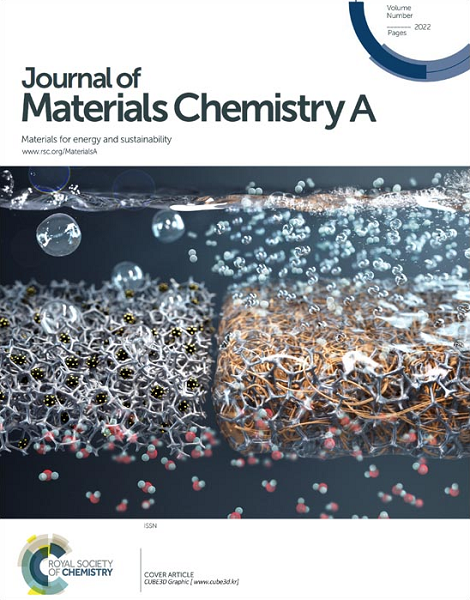A reconstructed, surface S-coordinated gas-penetrable Cd hollow fiber for selective CO2 electroreduction to CO at high current density
IF 10.7
2区 材料科学
Q1 CHEMISTRY, PHYSICAL
引用次数: 0
Abstract
Efficient electrochemical CO2 reduction reaction (CO2RR) relies on not only the development of selective/active catalysts but also the smart design of advanced electrode configuration to address the critical issues of poor CO2 mass transport and sluggish cathodic reaction kinetics. In this work, a reconstructed, surface S-coordinated low-melting-point (LMP) Cd hollow fiber (s-Cd HF) for CO electrosynthesis from the CO2 reduction is developed by partially hydrothermal sulfidation of a porous CdO HF (CdS@CdO HF) followed by in-situ electroreduction during CO2RR. Attributing to the improved mass transfer, well-established triphsic interfaces, and abundant S-coordicanted Cd active sites, the most active s-Cd HF operated in gas-penetrable configuration exhibits high electrocatalytic efficiency for CO2-to-CO conversion with a Faradaic efficiency (FECO) of over 90% across a wide potential range of 220 mV, and it displays a high CO partial current density (jCO) of up to -125.1 mA cm-2 at -1.01 V vs. reversible hydrogen electrode (RHE). Notably, both FECO and jCO remain constant over a period of a 12 h stability test. This work demonstrates the great potential of empolying a LMP metal hollow fiber to reinforce reaction kinetics for the efficient CO2 electroreduction.求助全文
约1分钟内获得全文
求助全文
来源期刊

Journal of Materials Chemistry A
CHEMISTRY, PHYSICAL-ENERGY & FUELS
CiteScore
19.50
自引率
5.00%
发文量
1892
审稿时长
1.5 months
期刊介绍:
The Journal of Materials Chemistry A, B & C covers a wide range of high-quality studies in the field of materials chemistry, with each section focusing on specific applications of the materials studied. Journal of Materials Chemistry A emphasizes applications in energy and sustainability, including topics such as artificial photosynthesis, batteries, and fuel cells. Journal of Materials Chemistry B focuses on applications in biology and medicine, while Journal of Materials Chemistry C covers applications in optical, magnetic, and electronic devices. Example topic areas within the scope of Journal of Materials Chemistry A include catalysis, green/sustainable materials, sensors, and water treatment, among others.
 求助内容:
求助内容: 应助结果提醒方式:
应助结果提醒方式:


